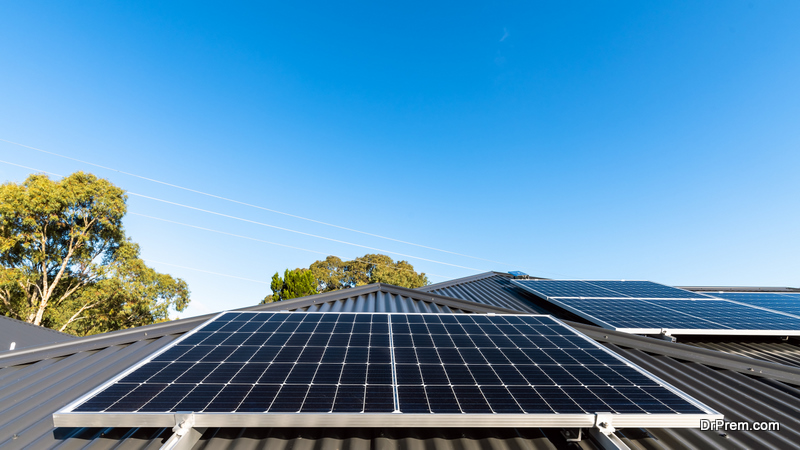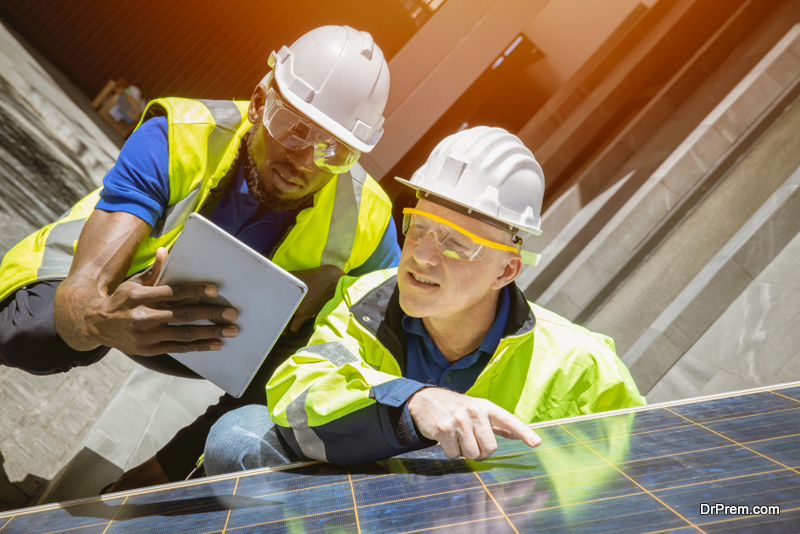As demand for renewable energy grows, business owners and homeowners alike are turning to solar power as a backup source. With solar installation in mind, people are starting to design their homes and buildings with solar-ready roofs.
Designing a solar-ready home can reduce construction and installation costs of solar panels in the future. That said, you might be also wondering about the Cost of home solar power systems. Interestingly, there are few outliers in brand pricing, and most suppliers observe comparable cost ranges. When comparing system prices based on panel brands, keep in mind that other aspects affect the final system price, such as installer expertise, location, racking equipment, inverter brand, etc.
Integrating your home design with a future solar build maximizes the system’s potential and simplifies the installation.Check out the following factors to consider when designing solar-ready roofs.
1. Create An Infrastructure For Future PV Systems

Space is not the only consideration when designing solar-ready roofs. They must also be mounted and equipped with all necessary equipment like penetration hardware. This means your concrete roof should have sufficient space for all the mounts.
The roof’s material can’t be weak or rigid at the same time. The PV system will include solar panels, an inverter, and an electrical panel within the building. So, the energy must move from the roof into the building.
To accomplish this, one must create electrical conduits to channel the energy down. While this is possible later, it may be more difficult and costly. Installing these conduits and leaving space for them will make attaching a solar system to the roof simple.
2. Consider Rooftop Orientation
When designing a new home, one of the most successful design approaches is rooftop orientation.
Solar panels function best when facing south. A south-facing roof is excellent for maximum solar energy output, especially in the US Intermountain West. It is not a good idea to put your panels in an inefficient direction, even if it results in the best tilt. For example, in Boston, a solar array oriented 30 degrees south will nevertheless generate more electricity than one oriented 42 degrees north.
It is possible to place panels at an optimal angle on flat roofs. Your solar panels will still get adequate sunlight if your roof isn’t flat. A competent constructor can assist you in calculating an acceptable roof pitch.
Consider the future growth possibilities of any properties to the south while deciding where to build your home. A multi-story building, for example, may block your sun. Similarly, smaller trees will gradually become huge shade trees for your PV panels.
3. Allow For Extra Weight

Reinforce the roof to accommodate the solar system’s added weight. Solar photovoltaic (PV) systems installed on a roof add weight at certain connecting points. A ballasted system can increase the dead load on a flat roof by up to ten pounds per square foot. When it comes to roofing, it is recommended to consult an experienced and certified contractor.
Aside from the increased static load, extraneous conditions caused by a solar array should be considered (i.e., drifting snow, slow water runoff). This extra load can be many times that of a conventional solar panel array. When planning a building, keep in mind the additional static and dynamic loads that may be imposed on the roof. The ASCE or American Society of Civil Engineers’ international building code can be used to calculate probable snow loads.
4. Prepare The Main Electrical Equipment
The National Electrical Code (NEC) specifies how to safeguard electrical equipment from overheating due to building utility and grid-interactive solar array use. It is easier if the electrical equipment bus surpasses the utility-source breaker. This is achieved by specifying the main panel bus with a higher ampacity than the building’s main breaker. If the main breaker is scaled to the panel bus rating, it can be down-rated in the future when the building’s peak demand is reviewed.
In the future, these principles will enable greater flexibility than relying on the NEC rule that ‘utility breaker amp rating + solar breaker amp rating is less than 120% of bus amp rating’. A connection to the main electrical room and some top-floor wall space for solar inverters are also advised. A ground level outside disconnecting means of combined AC solar generation conduit may also be a good concept for future installation conditions.
5. Take Into Account The Zoning and Permitting Laws

Local zoning and permitting regulations may affect on-site solar development and must be addressed throughout the project’s design process. It is critical to understand the zoning context and whether future surrounding construction will cast a shadow on the PV array, as shading can harm system performance. It is important to review the laws governing sun access and heritage preservation.
For example, in San Francisco, new development is required to have solar panels, even beyond solar-ready. California is also exploring a state-wide solar mandate for new buildings, similar to San Francisco’s
Conclusion
Overall, there are a lot of things to think about when making a building design solar-ready. While there are many factors to consider, the decision to install or allow future installation of solar panels can be very beneficial to the building owner.
Article Submitted By Community Writer




